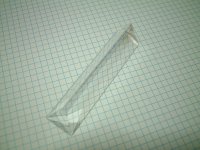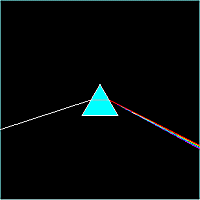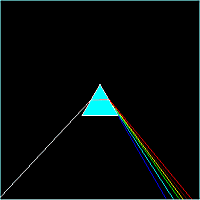

| Passing through a prism or a water drop in the air, rays of light are decomposed into colored rays of rainbow. This is because the diffraction index depends on wavelengths of light, and called the dispersion of light. |
   |
A prism is a (small) triangular pillar, which is made of transparent material, such as glass or plastic. Parallel rays or laser rays incident on the prism are partially reflected and partially refracted.
As the refraction index of the material of a prism is different, the magnitude of refraction or dispersion varies. Figures on the left panels show the cases of FK1 glass with a small diffraction index ( n = 1.47) and of SFS1 glass with a large index ( n = 1.9-2.0).
‘F-BASIC program (Windows{Internet Explorer) |
||||
|---|---|---|---|---|---|

|
Rainbow arises when water drops in the air refract sun light. Since refraction angles slightly depend on wavelengths of light, rainbows are so colorful.
‘F-BASIC program (Windows{Internet Explorer) |
||||
| (1999-2001 Photo by J. Fukue) | |||||
 Go to Submenu
Go to Submenu Go to Menu
Go to Menu
©RΘwoΕ ΦΨ[ SHOKABO Co., Ltd.